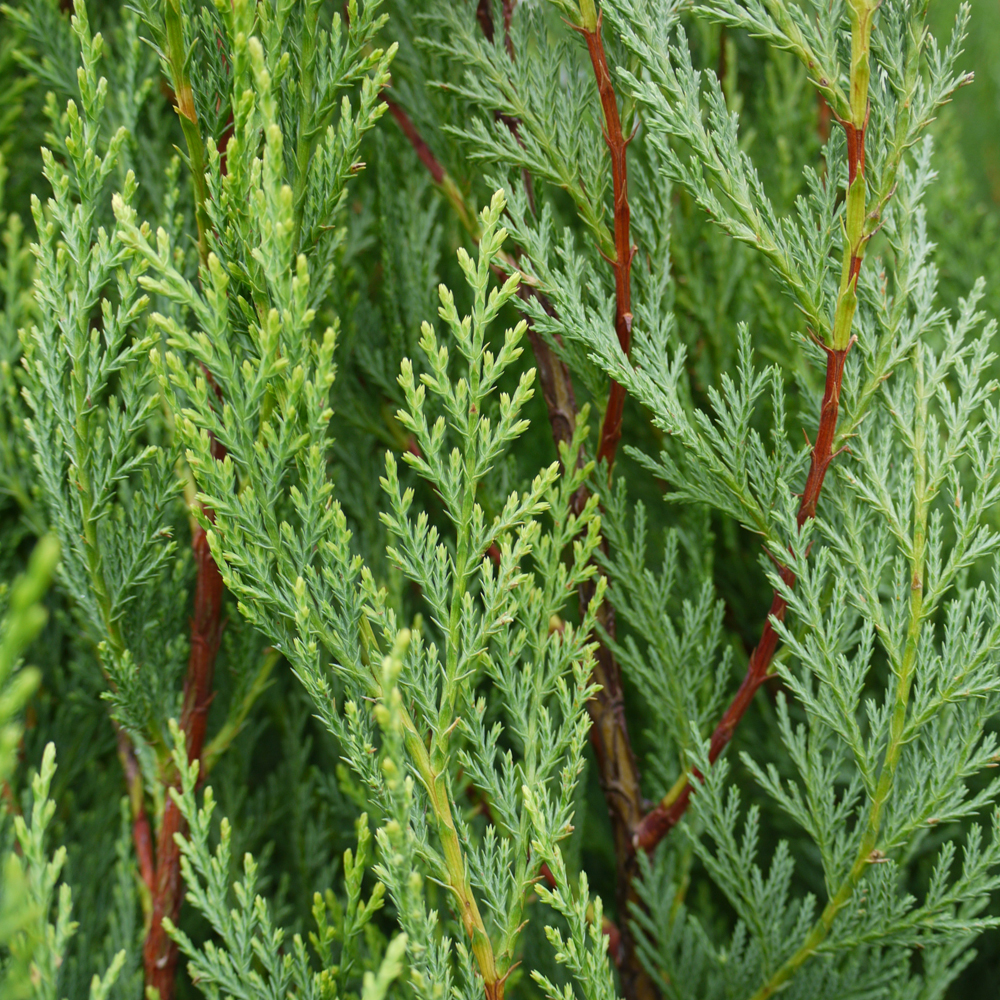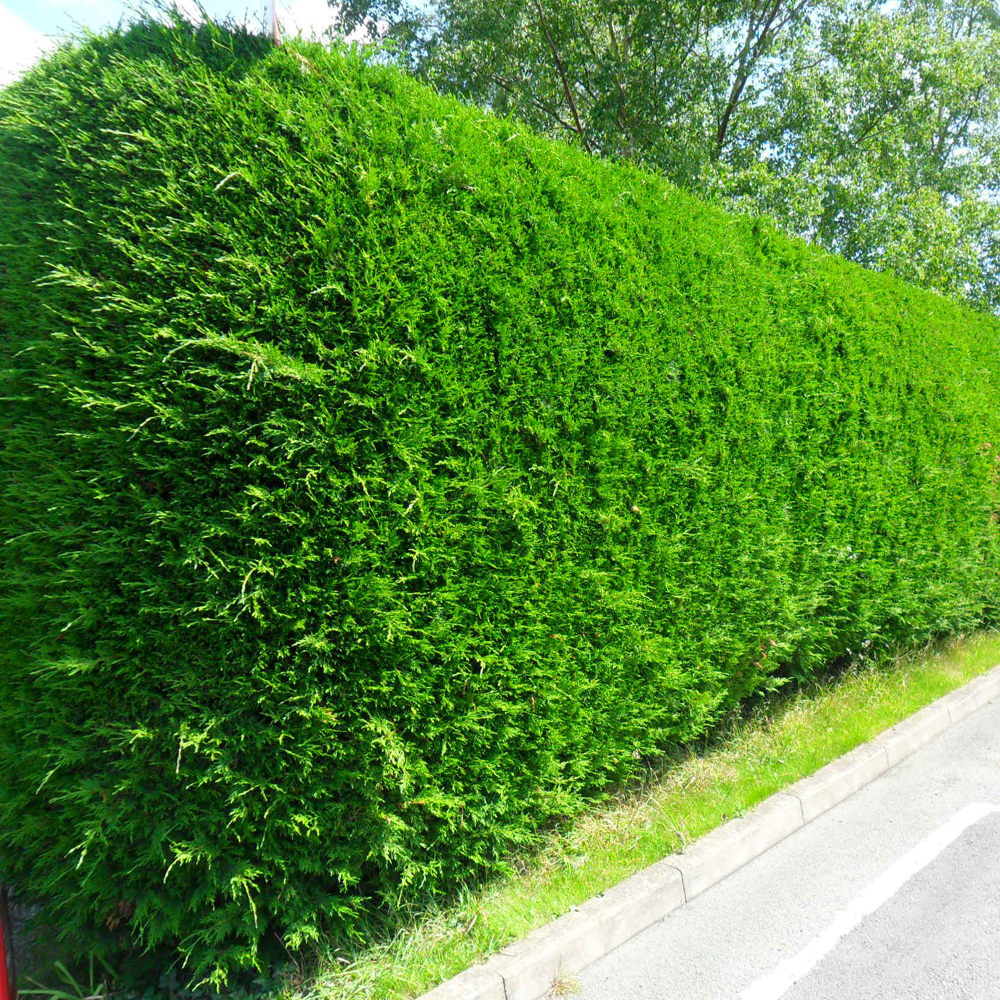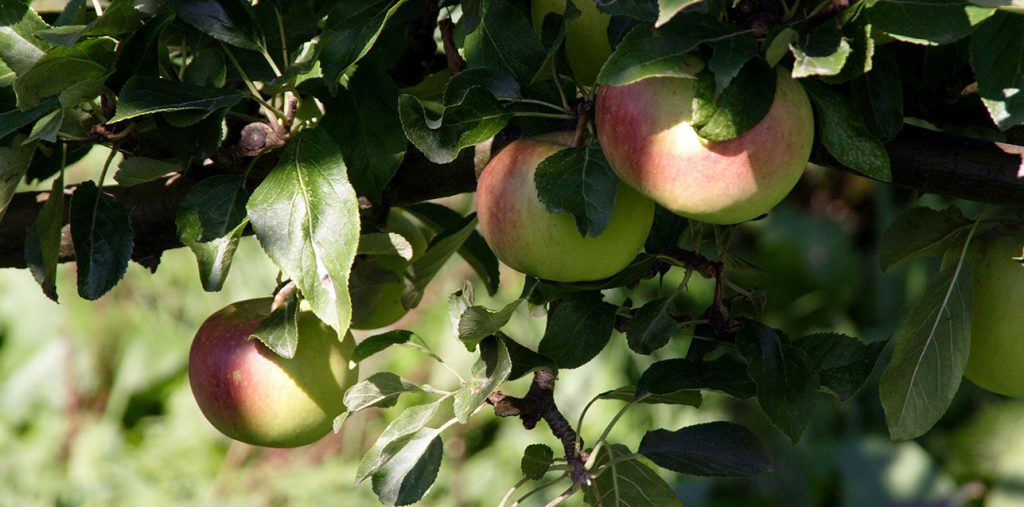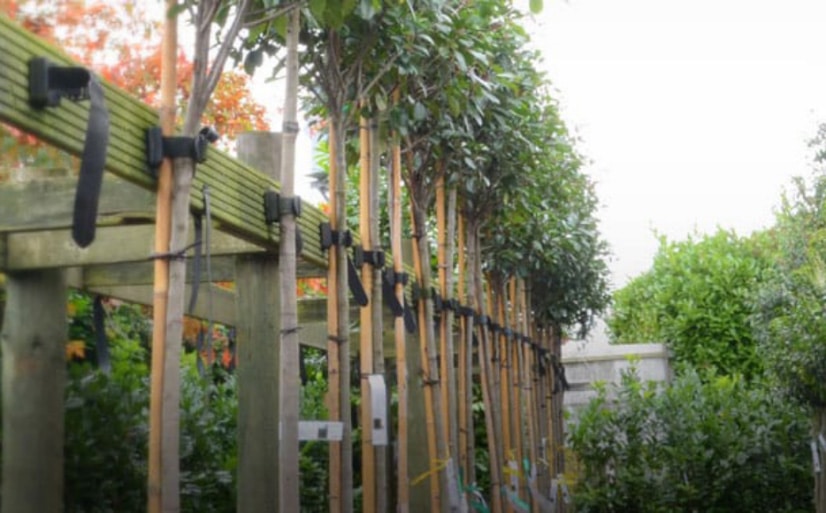You might be wondering is Leylandii is a good option for screening? Well we certainly believe it is! In our latest article, we delve into the distinctions between the Leylandii varieties we have in stock. We also highlight the key advantages of planting Leylandii and provide essential care tips to help your new trees thrive once planted.
What is Leylandii?
The Leylandii is a fascinating hybrid that results from a cross between the Monterey cypress (Cupressus macrocarpa) and the Nootka false cypress (Chamaecyparis nootkatensis). This conifer stands out due to its notably rapid growth rate and dense foliage. Over the last 50 years, it has become one of the most prevalent choices for trees and hedging across the UK.
The most common variety of hedging is Cupressocyparis leylandii, also known as Leyland cypress. Other popular varieties include Cupressocyparis leylandii ‘Castlewellan Gold’ (Golden leyland cypress). This variety is is slower growing, but features a beautiful golden colour during the spring and summer!

Why is Leylandii so popular?
Leylandii remains a top choice for many contemporary needs as it ticks all the boxes for so many requirements. This conifer has a rapid growth rate of approximately one metre per year, this means that it can quickly establish a dense and effective screen to create a sense of seclusion.
An excellent candidate for year-round greenery, Leylandii maintains a beautiful green backdrop in any season due to its evergreen nature. Its appeal is further strengthened by its ability to thrive in a variety of soil types, its tolerance of coastal environments, and its suitability for creating formal hedges through regular clipping.
One of the greatest benefits of planting Leylandii is that it creates a valuable haven for wildlife and important urban habitat. This feature is often overlooked.
Caring for Leylandii
While Leylandii is known for quickly creating a dense screen, its fast growth has unfortunately led to some negative attention. To address issues arising from neighbour disputes over light and air, the government introduced legislation in 2005 aimed at mitigating antisocial behaviour related to high hedges.
It’s unfortunate that negative stories deter people from considering Leylandii for their gardens. It’s worth noting that regular trimming, ideally twice over the summer, allows Leylandii to be kept at a reasonable size, effectively preventing issues of this nature.

Hopefully this guide helped to explain what you need to know about Leylandii and highlight the reasons why this conifer continues to be a popular choice (despite some of the negative attention it receives).
Read More:
1. Leylandii Trees: King & Co Website
2. Leylandii Hedge: King & Co Website
3. Leylandii cypress: Royal Horticultural Society (RHS) website
4. A Guide to Screening Trees: Is Photinia Good for Natural Privacy?
5. A Guide to Pleached Trees: How effective are Hornbeam at creating privacy?
6. A Guide to Tree Planting: Is Summer a good time to plant?





